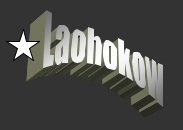
Chapter 7
The
next day we reported on the events of this mission to our squadron in
Chengtu. There was excitement and congratulations, mention of a
decoration and questions -- how did the "gun camera" shots turn
out? Well, there were no pictures. Our gun camera had been
inoperable since we left Chengtu. There was no question about the
first kill -- most of the countryside around Laohokow witnessed
it. Last night's victory, however, occurred 400 miles away, deep
in enemy territory. Confirmation from the underground, the OSS or
the Community Chinese would be forthcoming, but we would have to
wait. So would the decoration.
We were ordered back to headquarters as soon as we could get there, but
Laohokow fit into our new plan to get out of the 426th. We now
had flown 12 missions. With 25 missions we could rotate
home. We had decided to "hog" missions. Better than that,
we would create missions by flying "intruders." We would ignore
the squadron and quietly stay were we were. We didn't call
headquarters again and didn't response to their calls.
We had been trained in intruder technique at Hammer Field, but 14th Air
Force turned thumbs down on any night intruder missions. The
426th didn't impress anybody as being an aggressive outfit and in the
squadron that replaced us in Kunming, there had been an instance when
one of their night-fighter crews had been dispatched on an intruder
mission. The pilot and the RO never left the vicinity of their
airfield, but fired their guns, exhausting their ammunition harmlessly
into the air, and later landed to report the mission complete.
GCI radar had them on their scope the whole time.
Intruder missions involved low-level solo sweeps carried out in
darkness against enemy ground targets of opportunity. A mission
would be planned for an area where we thought there might be night
activity. The idea was to look for truck convoys, trains, troop
movements -- anything we could attack, disrupt, demoralize or set up
for a later day fighter attack. Aggression was required.
The 7th CACW didn't know about the 14th Air Force's ban on intruders
and, our immediate success having convinced the Chinese squadron
commander that we were a really hot combat team, we were authorized
forthwith to initiate intruder missions. But we had to prove we
could be effective.
The weather cleared and the first such mission was the next
night. The day fighters passed on information that made it appear
there were signs of activity about 40 miles northeast of the
field. At about 9 p.m. we headed out with our fingers
crossed. If we came back without making contact, we might not get
another chance. We didn't have to worry. Thirty minutes
into the flight we began following a road that suddenly had trucks
moving on it. Recognition and identification procedures were not
necessary. They were a convoy of Japanese army trucks. We
immediately went into a strafing run and made six or seven
passes. Any traffic in that area had to be Japanese. We
encountered small arms fire for the first time, but I don't remember
that we were hit. The convoy, however, was stopped and heavily
damaged. There were explosions, and some of the trucks were
burning. We broke off that attack and continued the mission,
hoping to add to the score, but didn't encounter any more of the enemy
that night.
The next morning, day fighters confirmed the results of our
mission. The Chinese were almost as elated as we were. The
7th CACW maintained daylight air superiority, resulting in restricted
daytime movement of enemy troops and material. Their actual
encounters with the enemy were infrequent and Chinese day fighters
hadn't built up a big score. The terminology hadn't been invented
yet, but with two air-to-air victories and one truck convoy disposed of
in less than a week's time, in the 7th CACW we were the "top gun."
We had the enthusiastic cooperation of our Chinese squadron mates, but
Chinese ground forces were being beaten and were falling back in
disorder. Time was running out in Laohokow. In spike of
this, Ab came up with the idea of our bombing the Yellow River
Bridge. This bridge was a strategically important target for the
14th Air Force. There had been day strikes directed against it by
both fighters and bombers without success, but with heavy casualties
being inflicted on our side. The Japanese were supposed to be
defending the bridge with radar controlled anti-aircraft guns.
They were supposed to be as effective after dark as they were in
daylight. The bridge was near Luoyang, 350 miles north of
Laohokow, and Ab wanted to bomb it, but I didn't like the idea from the
outset. I didn't think our one plane with four 500-pound general
demolition bombs would be effective, and it seemed super risky against
a determined defense -- but Ab was determined, too. I agreed to
the undertaking, not wanting to be "chicken." Ab and I, from the
beginning, had an understanding that if we both didn't agree to a
particular undertaking, then we wouldn't do it. This mission was
the only time I wavered, but I didn't tell him.
Chinese ordnance provided us with four 500-pound bombs, which we loaded
onto external bomb racks along with extra fuel tanks, also carried
externally. Once we were committed, Ab was busy preparing the
plane, checking the bomb releases that hadn't been used before, loading
the ordnance, gassing up. At the same time, I was preflighting
the navigation to the target and back and reviewing the actual
contemplated attack. At the bridge, the Yellow River ran west to
east. The bridge ran north and south.
